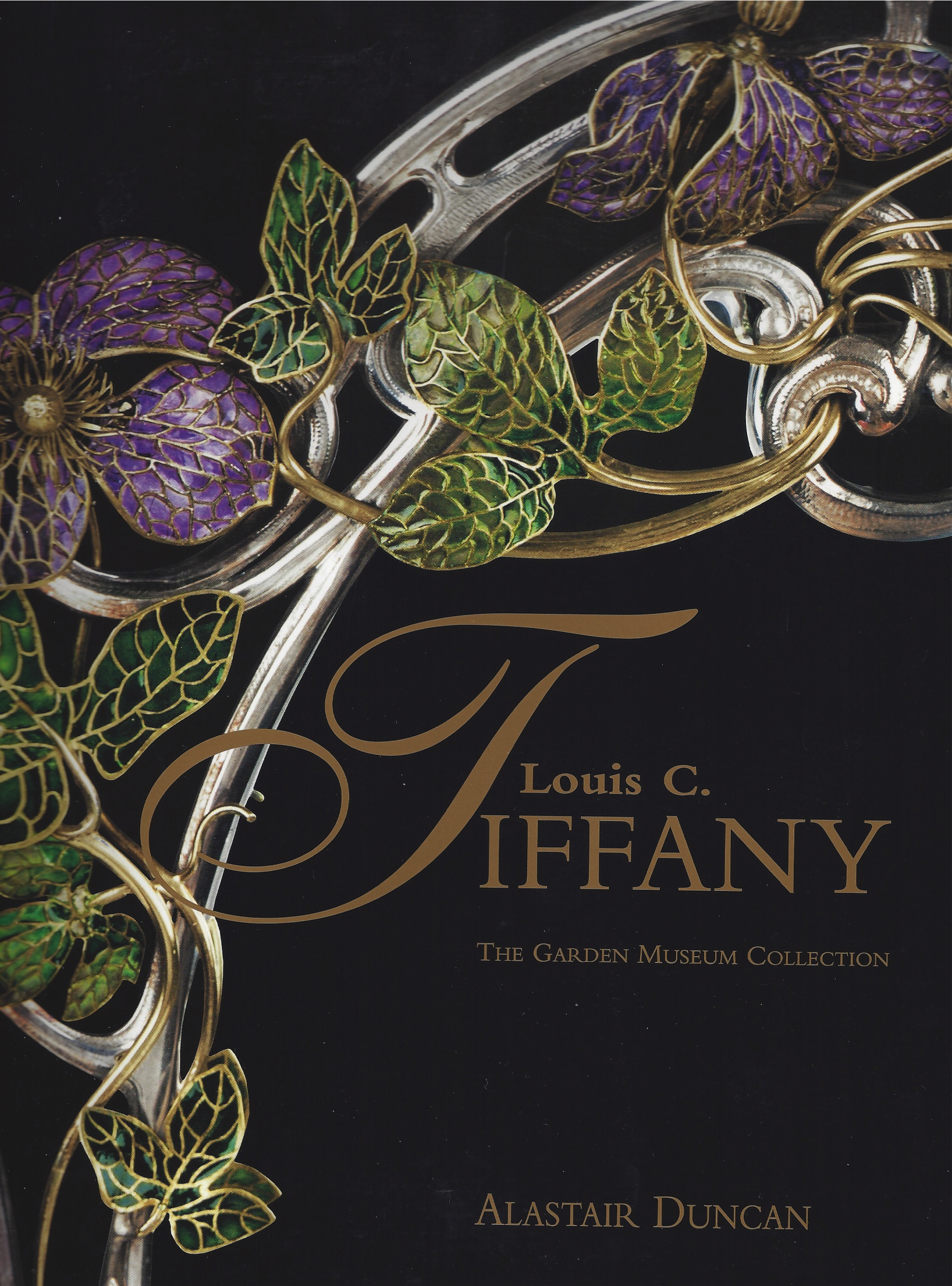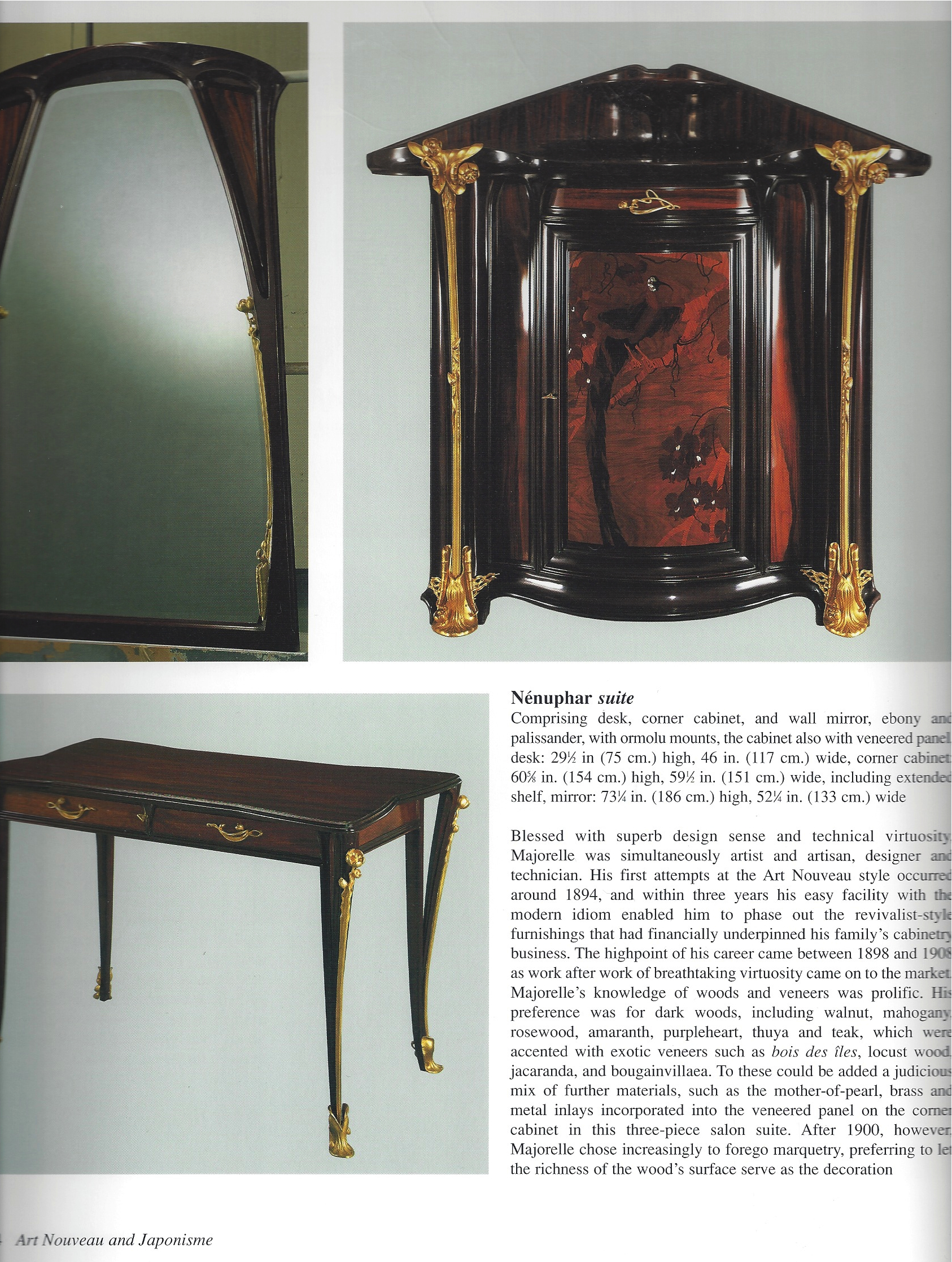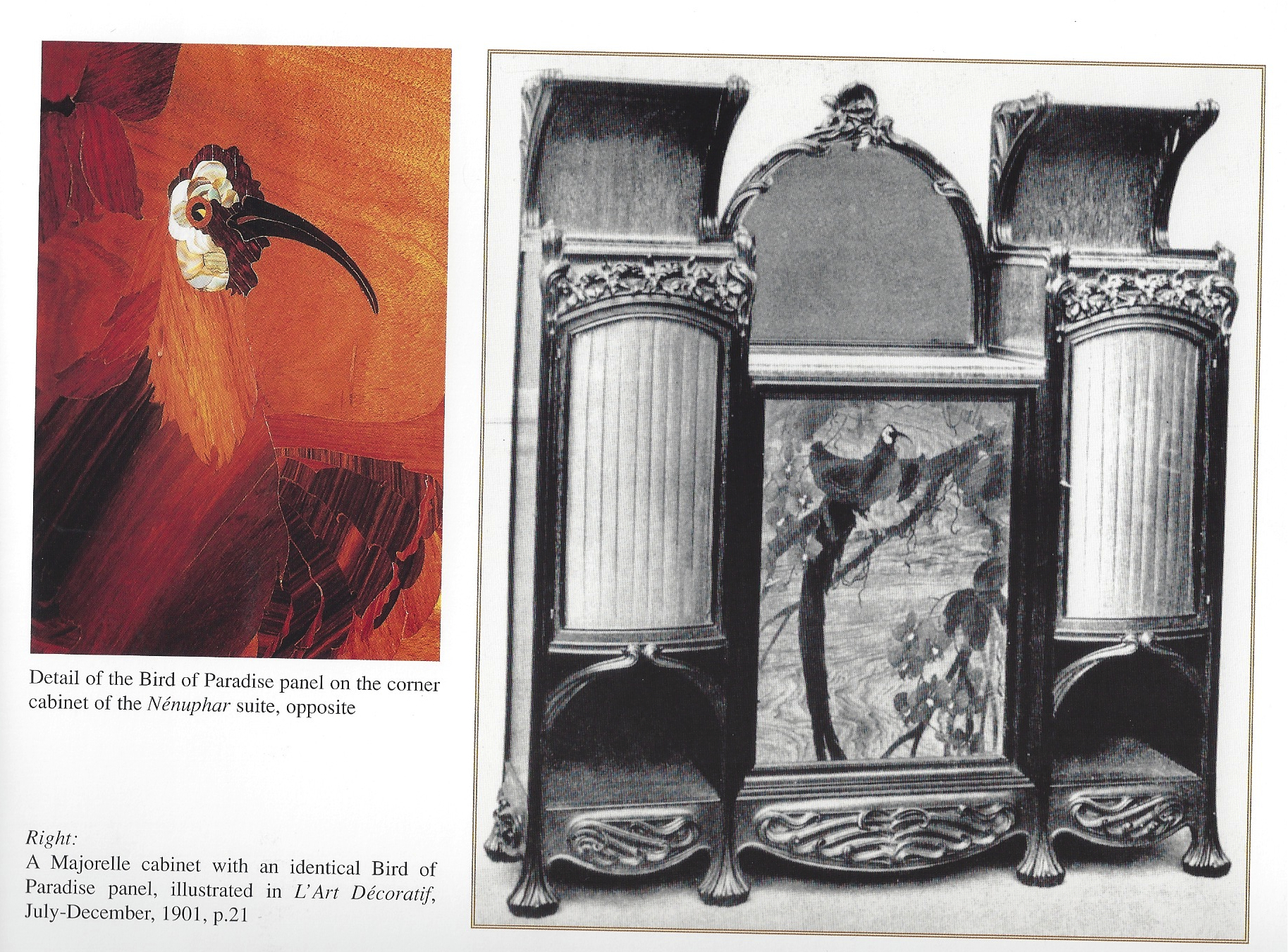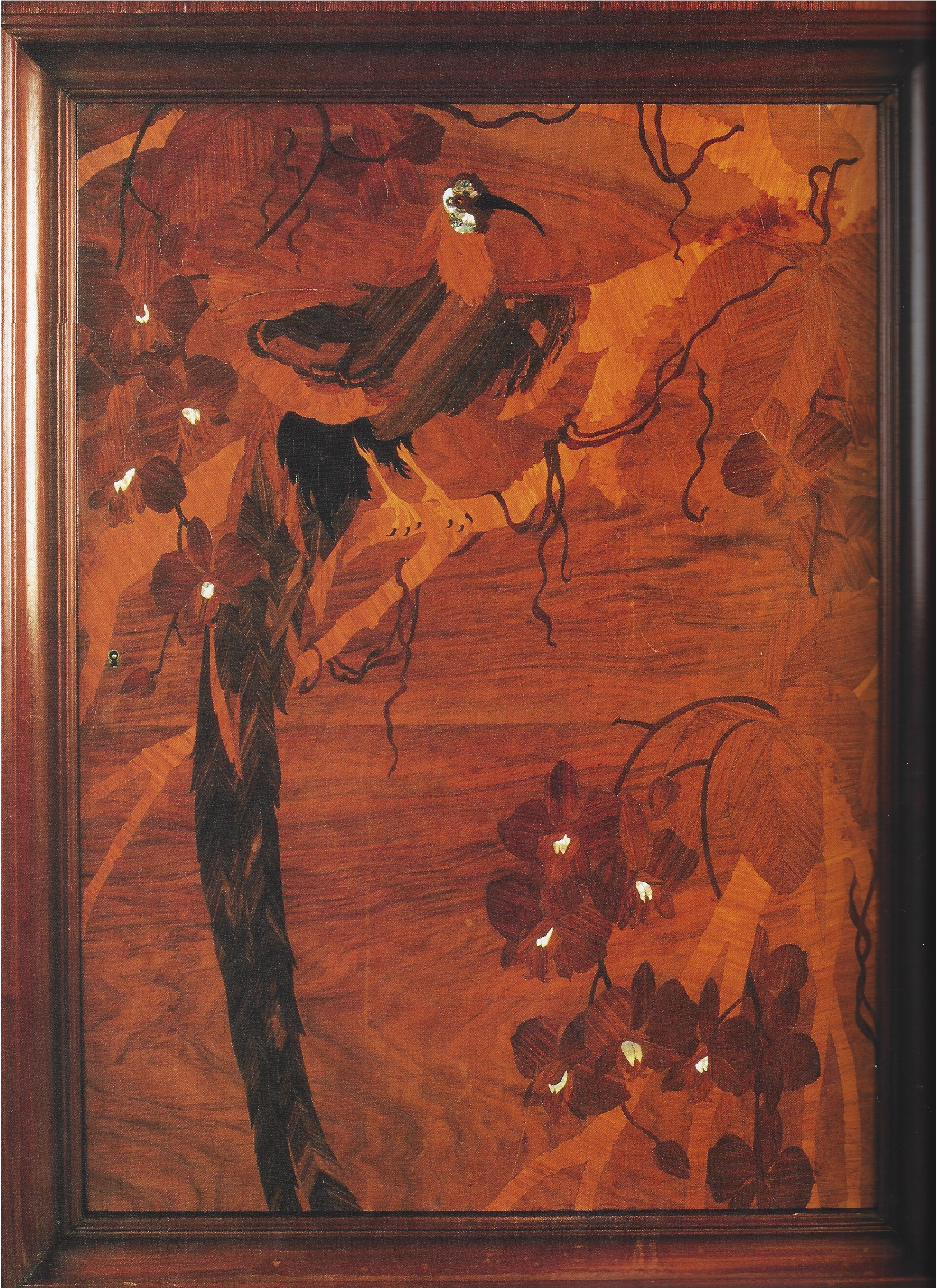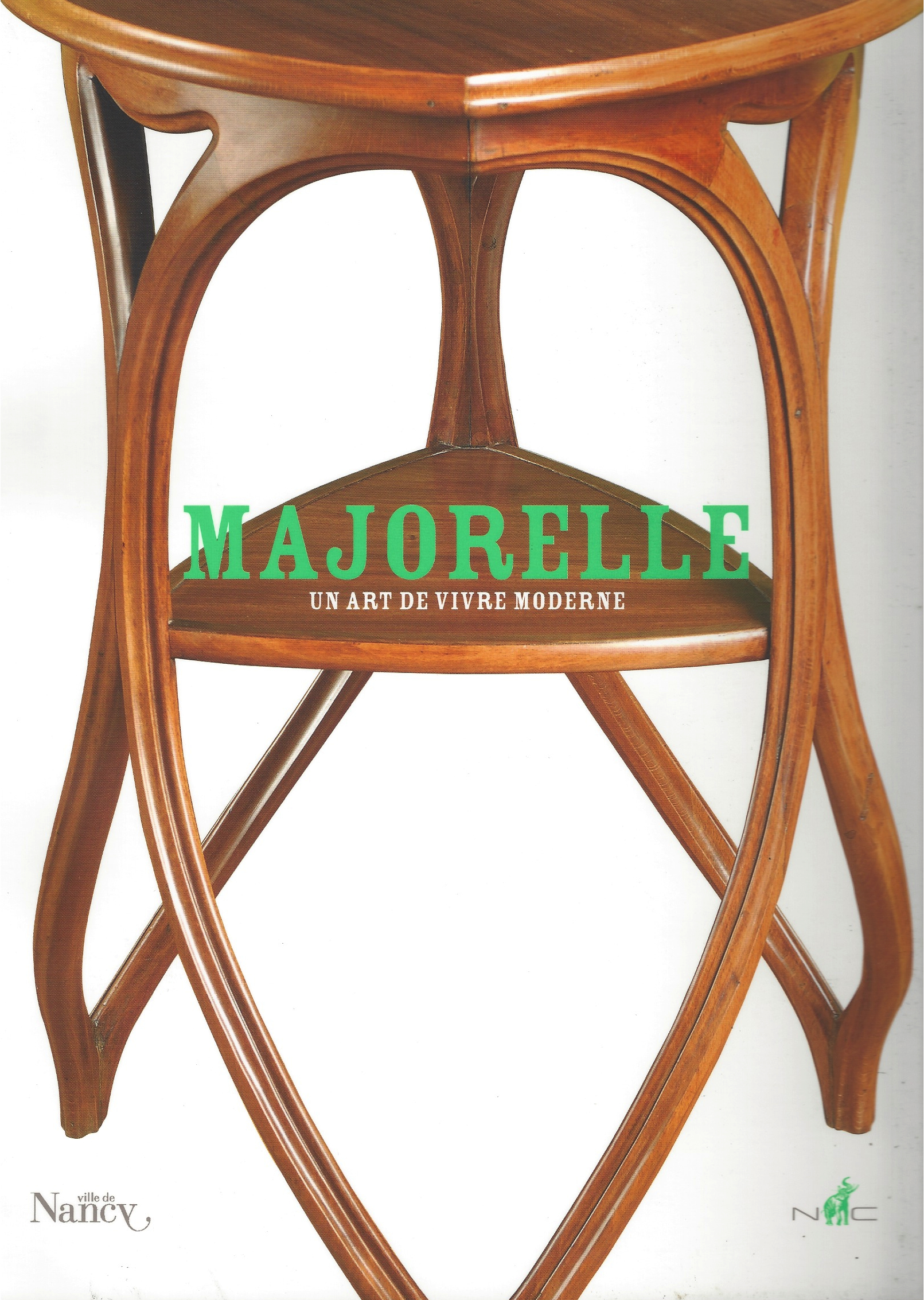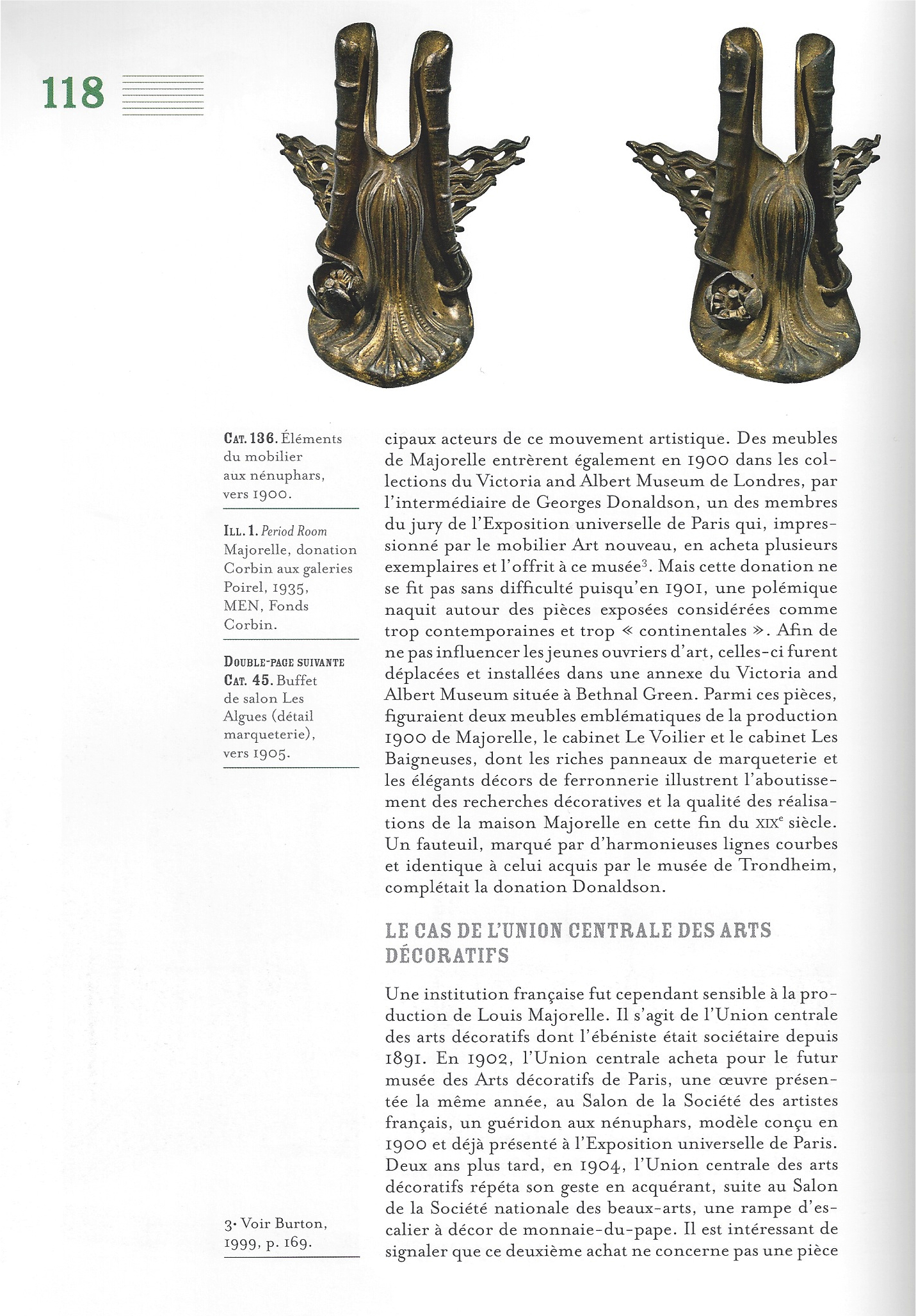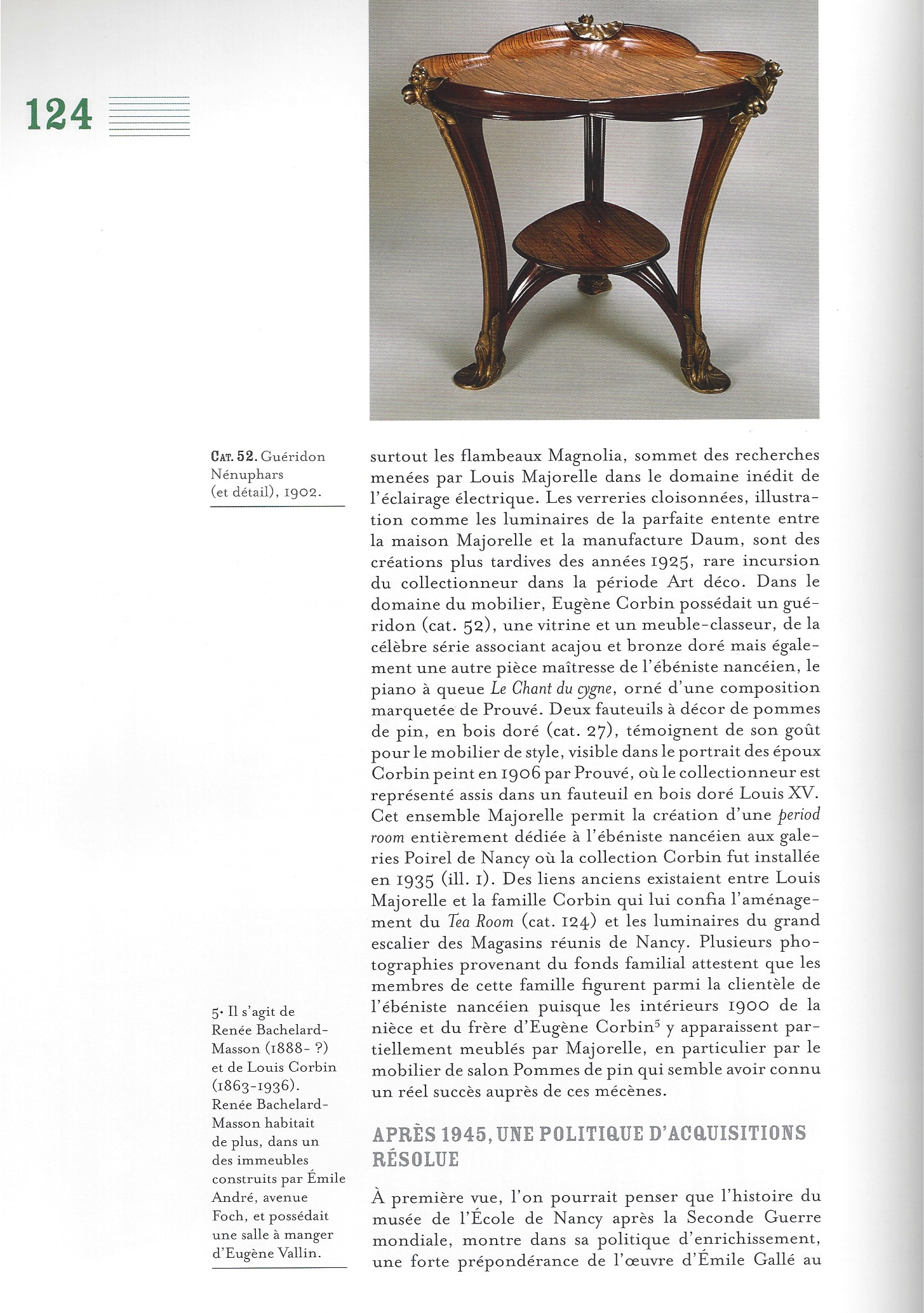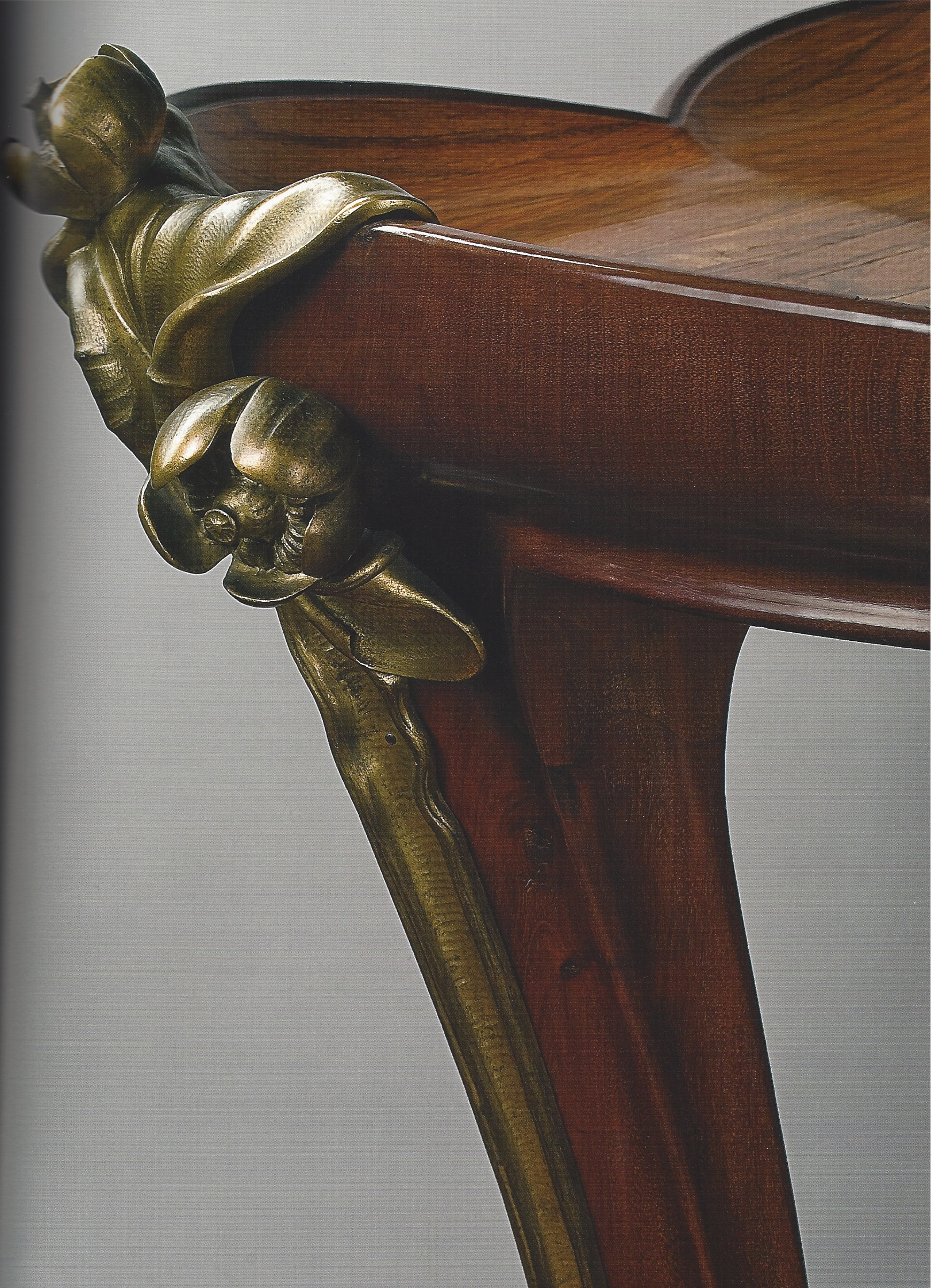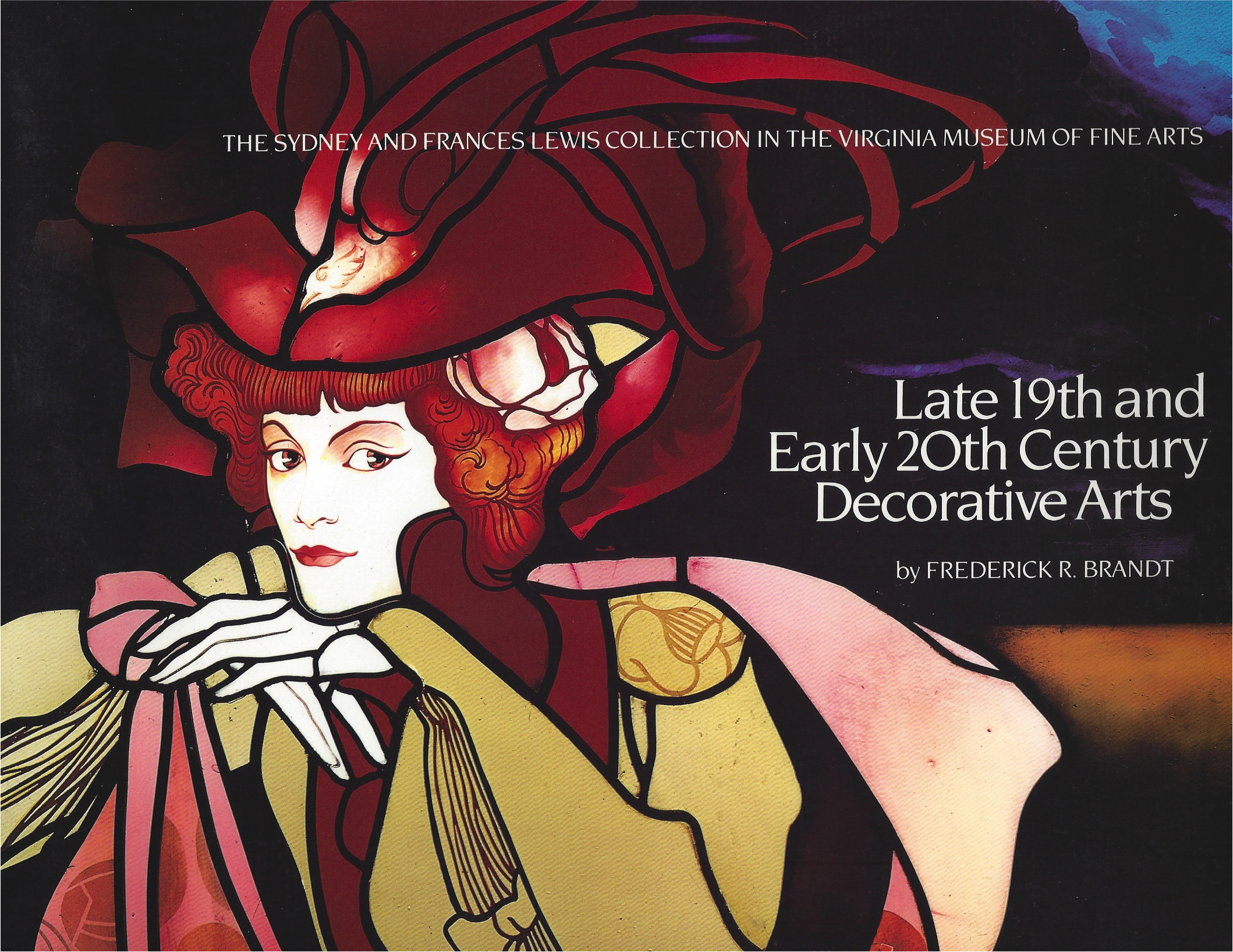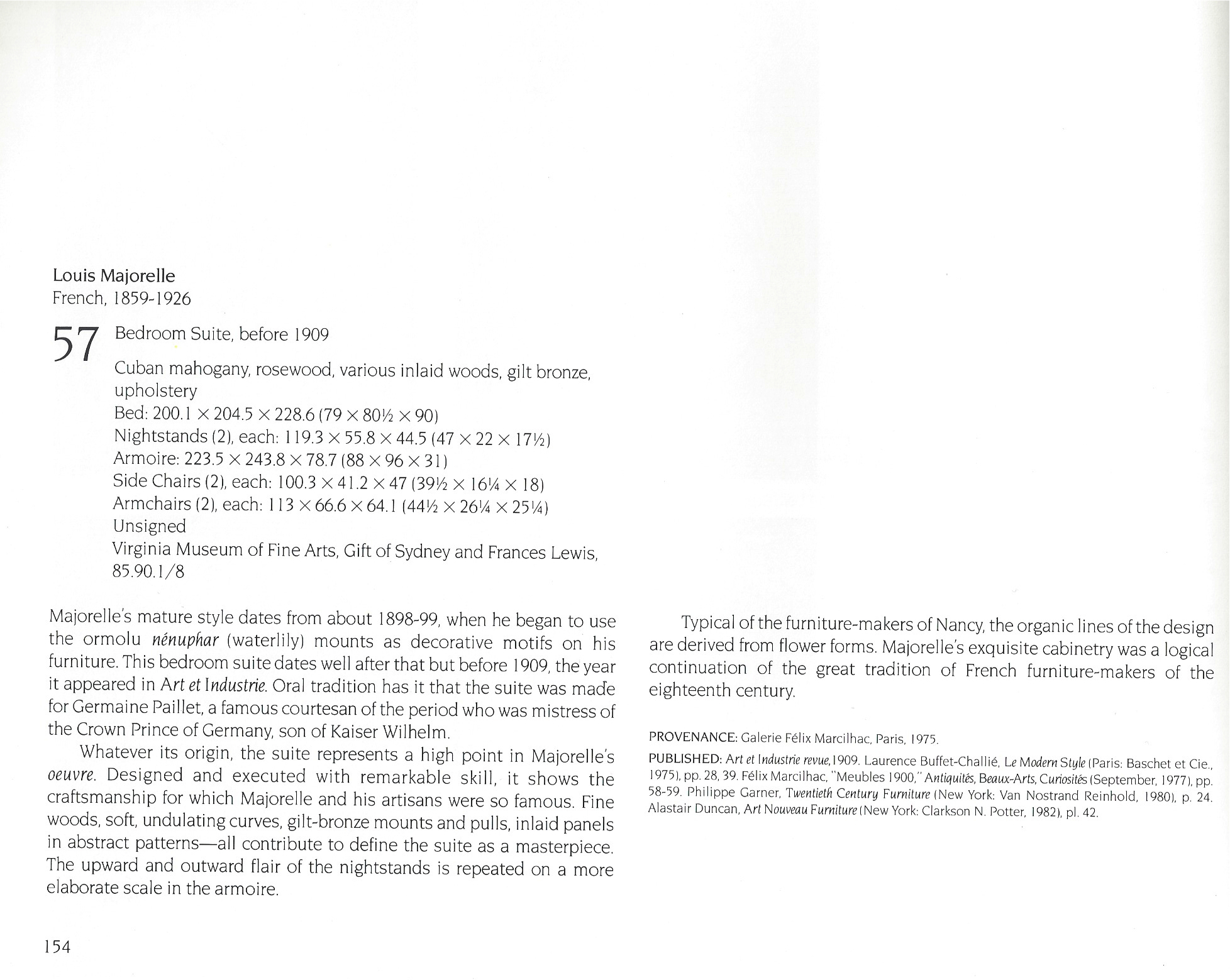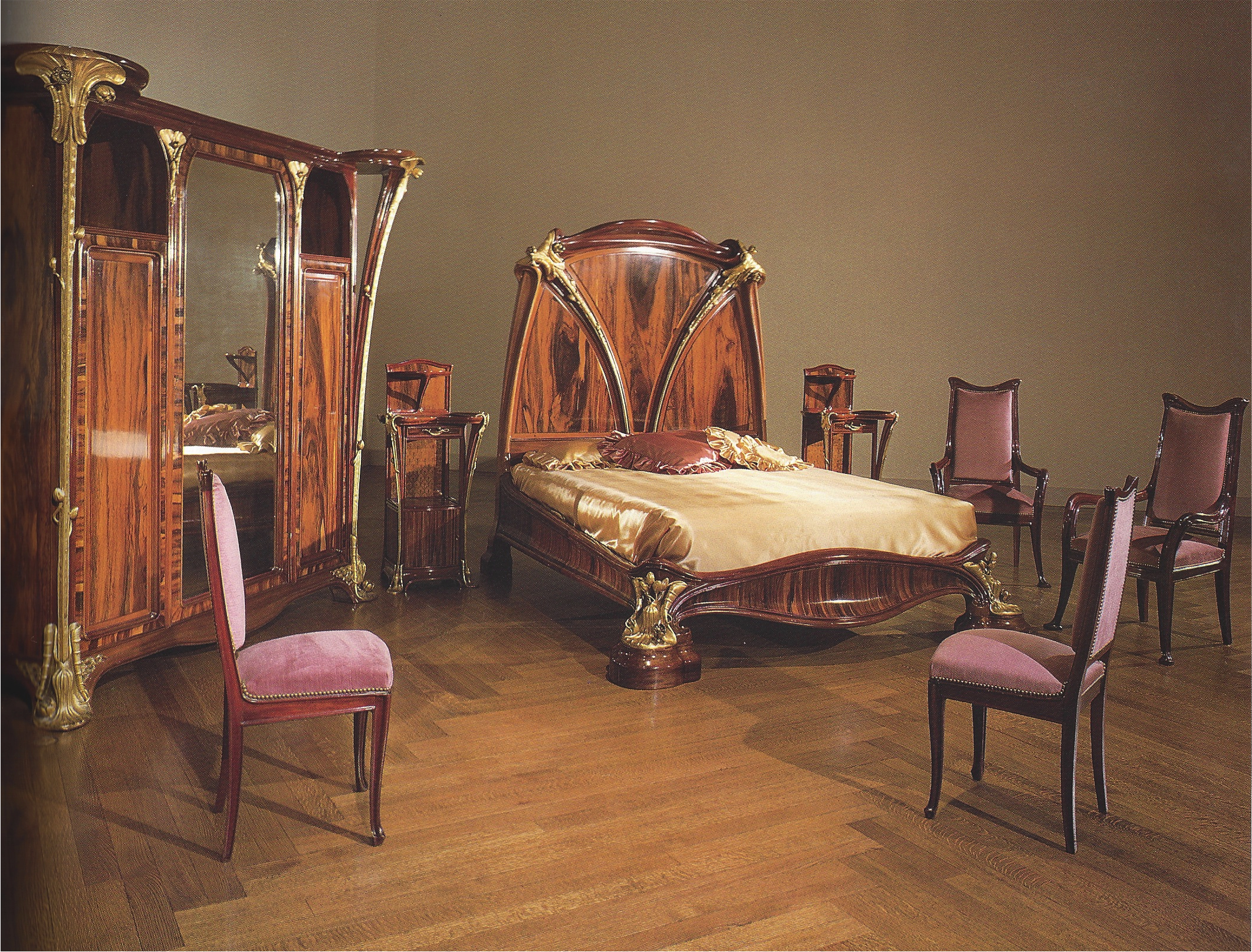The central panel decorated with a bird of paradise in walnut, rosewood, kingwood, tulipwood, boxwood, partridge wood and mother-of-pearl marquetry inlay, opening to reveal a shelved oak interior, the body applied with martelé nénuphars gilt-bronze mounts
60 ½ in (153.5 cm) high, 59 in (150 cm) wide, 31 ½ in (80 cm) deep
Provenance
Private collection, Trocadéro, Paris
Pierre Becq, Metz
Nicolas Borsje, Paris
The Louis C. Tiffany Garden Museum, Matsue, Japan
Literature
Alastair Duncan, Louis C. Tiffany, The Garden Museum Collection, 2004, pp. 624-625
Takeo Horiuchi, ed., A Selection of 300 works from Louis C. Tiffany Garden Museum, 2001,
p. 48
This spectacular encoignure with its extravagant and sensually modelled form deserves to be regarded as one of Louis Majorelle’s masterpiece of furniture design. Bringing together the finest materials and craftsmanship in a work of exceptional invention, the beautifully figured woods were carefully selected as well as the finely wrought gilt-bronze mounts, in the service of an artist at the very peak of his creativity.
Louis Majorelle ran a substantial atelier with a production that ranged from standardised designs for a broad market to sumptuous works, such as this Aux Nénuphars encoignure that fulfilled the most exclusive of commissions. This model is unique in that no known other versions exist - further evidence that it was a private commission from an important patron. It should be noted that there were other pieces of furniture made with the same marquetry panel, flat rather than bowed (illustrated L’Art Décoratif, July-December 1901, p. 21), but no other piece of this unusual angled shaped.
The mother of pearl inlay as well as the sumptuous woods creates a spectacular example of marquetry. A bird perches gracefully on a branch with blossoms, each feather and petal delicately and lovingly created. Vines twist and wrap themselves around the tree branches. Each individually crafted detail making the viewer appreciate the level of expertise Louis Majorelle put into his marquetry work. The unique triangular shaped topped cabinet appears to grow from the ground with guilt bronze accents of elongated water lily and accentuates the simple geometric lines of the piece. The organic shape and use of various woods represents the change in Louis Majorelle’s style from Rococo revival to Art Nouveau. No longer does Louis Majorelle use ornate flowers and lines, but rather chooses to use simple and continuous lines to accentuate a more decorated central panel.
This piece represents a change in Louis Majorelle’s style as well as a change in taste during the late 19th-century. Bronze mounts were becoming increasingly popular features on furniture and Louis Majroelle emulated the style into his own works. In doing so he created the Nénuphar series, which were based on water lily plants. The pieces are simpler in design with the smooth, elongated mounts representing the beauty and elegance of the water lily. Louis Majorelle displayed the series at the 1900 Paris Exposition Universelle and it was a huge success. It was this exposition that catapulted Louis Majorelle into the limelight. Louis Majorelle’s move away from more elaborate designs to the Art Nouveau focused on moving back to a simpler time, something more organic yet just as luxurious.
The oldest of seven children, Louis was born in 1859 to Auguste-Constantin Majorelle and Marie-Jenny Barbillion. Louis Majorelle spent the better part of his life working in his father’s studio. Auguste Majorelle was a wood-based artist as well, and dabbled in other forms of decorative arts in his spare time. It was his father’s historic revivalism style that influenced Louis Majroelle’s earlier works. The father and son found inspiration in the ornate and highly detailed styles of furniture found in the Château de Versailles. For a short period Louis Majorelle studied in Paris and had his Salon debut in 1875. After his father’s death, Louis Majorelle returned to his home and restarted his work in his father’s company.
The turn of the century was an important moment for Louis Majorelle. With his changing style and growing workshop he soon became an international sensation. In 1900 he showed a few of his Nénuphar pieces and was recognized as one of the most important ébénistes of his time. These designs attest not only to his exceptional technical mastery but also to his ability to create perfect harmonious forms, inspired by nature. Also during this year he was appointed Chevalier de la Légion d’Honneur. Soon after in 1901 Louis Majorelle and a few of his friends created the École de Nancy, which was not only a school for the industrial arts but also a place for a museum which would house a permanent collection as well as arrange exhibitions and competitions. Majorelle was one of its vice-presidents.
A Majorelle showroom opened in 1902 and in 1903 the École de Nancy staged an exhibition at the Musée de l’Union Central des Arts Décoratifs (now the Musée des Arts Décoratifs) where Louis and his friends displayed twenty-two pieces of art. One year later the École de Nancy hosted another exhibition, this time at the Galeries Victor Poirel in Nancy where Louis Majorelle created a room where he designed the entire contents of the room.
In 1904 Majorelle bough Samuel Bing’s Art Nouveau shop on the rue de Provence in Paris, and later that year he exhibited in the United States at the St. Louis World’s Fair in the French section. In 1909, the firm opened shops in Oran and Algiers. Whilst successfully developing his business Majorelle remained an active member of the Paris Salons until his death in 1926.
Louis Majorelle’s familiarity with historical forms and his sensitivity to nature, which he described as his ‘admirable collaborator’ allowed him to create pieces of perfect harmony, in which elegant forms and precious decoration are balanced beautifully.
The bedroom suite from the Nénuphar series was one of Majorelle’s most important commissions, and two are held in museum collections today, the Musée d’Orsay and the Virginia Museum of Fine Arts (illustrated Philippe Thiébaut, ‘Majorelle dans les Collections du Musée d’Orsay’, Majorelle: Un Art de Vivre Maderne, 2009, p. 134; Frederick Brandt, Late 19th and Early 20th Century Decorative Arts: The Sydney and Frances Lewis Collection in the Virginia Museum of Fine Arts, 1985, p. The Nénuphar series was and still is considered to be his chef d’oeuvre and only his most prestigious and wealthy clients would have commissioned these pieces.




















